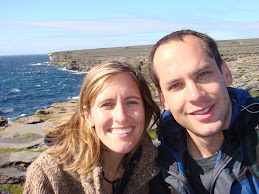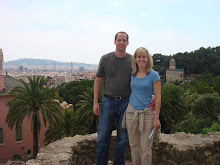We made our first voyage to Dublin last Saturday morning for a three-day weekend. Dublin is the largest city in Ireland, the capital of the Republic of Ireland and was founded by the Vikings in the ninth century.
Taking the CityLink bus from Galway to Dublin city centre was very relaxing, comfortable and easy http://www.citylink.ie/ and only 18 euro per person round trip. We stayed at a very modest one-star hotel right off O'Connell Street, centrally located. Here are highlights from our trip:
DAY 1
TEMPLE BAR
We started our day with a trip down O'Connell Street to Temple Bar to find Meeting House Square and its famous Saturday farmers' market. We slurped Irish oysters and Sauvignon Blanc before grabbing a traditional Irish lunch at The Shack, recommended by my colleague Charles Neave, a writer in Napa.
SOUTHWEST DUBLIN LANDMARKS
We walked to Dublin Castle, and St. Patrick's and Church Christ Cathedrals. Dublin Castle http://www.dublincastle.ie/ was first founded as a major defensive complex by King John in 1204, shortly after the Norman invasion of Ireland in 1169. St. Patrick's Cathedral http://www.stpatrickscathedral.ie/, founded in 1191, is the larger of Dublin's two Church of Ireland cathedrals, and the largest church in Ireland. Church Christ Cathedral is http://www.cccdub.ie/ the elder of the city's two medieval cathedrals, the other being St. Patrick's. It has been the seat of the archbishop of Dublin (initially solely Roman Catholic, then Church of Ireland) since medieval times, though for many centuries, it shared this status with St. Patrick's.
BUS TOUR
We took a ride on the Dublin City Hop-on/Hop-off Bus Tour http://www.dublinbus.ie/sightseeing/citytour.aspx - there are lots of tourist bus operators, but this one has Irish drivers that tell stories (sprinkled with humor) about all of the historic stops. The Bus Tour took us past all the top tourist stops, so we could decide when we wanted to hop off or which ones we wanted to visit the next day.
JAMESONS
We hopped off the bus tour at Jameson's Distillery for a guided tour and tasting and learned how traditional Irish whiskey is made and compares to American and Scottish whiskeys.
http://www.jamesonwhiskey.com/usa/text/visitus.php. We had an excellent drink called a Jameson Macree, which we vowed to make at home:
Jameson Macree
50cc Jameson
15cc Chambord
25cc Cranberry Juice
12.5 cc Fresh Lemon Juice
12.5cc Sugar Syrup
6 Raspberries
Shake all ingredients with ice & strain. Into an ice-filled long glass. Top up with crushed ice.
NIGHT LIFE
We had dinner at a little place by Millennium Bridge called Enoteca delle Langhe, inspired by the Piedmont region in Italy. Great antipasti and buffala mozzarella salad. http://www.ireland-guide.com/establishment/enoteca_delle_langhe.4276.html. After dinner, we walked along the River Liffey and took some beautiful pictures of the Four Courts, Republic of Ireland's main courts building. It was built between 1796 and 1802 by renowned architect James Gandon http://en.wikipedia.org/wiki/Four_Courts. We stopped back at Temple Bar for a few Jameson's cocktails - since we now know all about Irish whiskey - and watched drunk people make fools of themselves in the street.
DAY 2
RIVER LIFFEY BRIDGES
We had a big Irish breakfast the hotel (ham, eggs, sausage, baked beans and toast) and went for a brisk walk along the River Liffey. It was a beautiful morning, and we took lots of pictures of Dublin's famous bridges along the river, including the Ha'Penny Bridge, a pedestrian bridge built in 1816 and the first iron bridge in Ireland. It got its name from its distinct shape as well as the original toll of one half-penny, (later, one penny, two farthings). The toll was dropped in 1919.
GUINNESS STOREHOUSE
We arrived at the Guinness Storehouse for a tour and tasting at 9:30 a.m. and were drinking a pint of Guinness by 10:15 a.m. The lines were so long on Saturday, we decided to come right when it opened. We toured the seven-story Storehouse, learned how they make Guinness and finished our tour with a pint at the famous Gravity Bar with 360-degree views of Dublin. http://www.guinness-storehouse.com/
OTHER TOURIST DESTINATIONS
We hopped back on the bus and toured through Phoenix Park, the largest enclosed urban park in Europe - larger than Central Park or Hyde Park - it's 1752 acres. We then strolled down Grafton Street, the main shopping district in Dublin, and stopped off to take pictures of Ann's Church on Dawson Street, where Bram Stroker (Dracula) was married, and Mansion House, the official residence of the Lord Mayor of Dublin since 1715. We had awesome pizza at Steps of Rome, a wonderful little place tucked away on Chatham near St. Stephen's Green. We got soaked walking to Collins Barracks, a former military barracks now home to the National Museum of Ireland. There was a viking ship on display and a huge exhibition about all of the wars the Irish have been involved in other the centuries. http://www.museum.ie/
NIGHTLIFE
We had an incredible dinner at The Winding Stair, located above a bookshop right across from Ha'Penny Bridge. Definitely the best meal we've had in a long time. Damon started with an amazing parsnip soup and I had baked mushroom with Cashel blue cheese and wilted spinach. Then we had the smoked haddock, poached in milk with onions and white cheddar mash and a slow-roasted pork belly. Great wine list too and wonderful service. http://www.winding-stair.com/. We then strolled over to the Temple Bar area and enjoyed drinks and live music at O'Neill's 'til the wee hours of the morning, and had fun watching all of the Dubliners dressed in Halloween costumes. I had no idea that Halloween's origins date back to the ancient Celtic festival of Samhain (pronounced sow-in), so Halloween is huge here. Fireworks and bonfires are also part of the festivities.
DAY 3
TRINITY COLLEGE
We started our morning with a walk to points of interest around Grafton Street. We stopped first at Trinity College, which was founded in 1592 by Queen Elizabeth I. Trinity College Library is home to The Book of Kells, a manuscript that has survived from the Middle Ages and has been described as the zenith of Western calligraphy and illumination. It contains the four gospels of the Bible in Latin.
At the mouth of Grafton Street is the statue of Molly Malone. "Molly Malone" is a popular Irish song and has become the unofficial anthem of Dublin City in Ireland. The song tells the tale of a beautiful fishmonger who plied her trade on the streets of Dublin, but died young, of a fever. We also passed a replica of the Steyne Stone, a 15-foot-high standing stone that apparently stood on this spot during the era when Dublin was a Viking territory.
ST. STEPHEN'S GREEN
We walked through St. Stephen's Green, an enclosed park that dates back to the 1600s. At one point in history, access to the park was restricted to only the weathly homeowners who lived in Georgian-style houses surrounding the park. http://en.wikipedia.org/wiki/St._Stephen's_Green. We then stumbled upon the Dublin Marathon, which finished at Merrion Square, a park we wanted to visit. Access was closed due to the marathon, but it was fun to watch the leaders cross the finish line.
CUSTOM QUAY, EAST DUBLIN
We took a stroll down Custom Quay on the east side of Dublin to see all the new construction going on the banks of the River Liffey.
We really enjoyed the trip and thought two full days in a good amount of time to spend in the city. The city has a great vibe, we loved all the bridges and river running through it - and it was easy to walk around and navigate. We'll definitely go back and spend more time in the museums: any building with "national" in the name is free to the public, we were told, so there is so much to see inside - and this trip was all about being outdoors. We might go back in the winter for a museum-focused trip.
Tuesday, October 30, 2007
Subscribe to:
Post Comments (Atom)




No comments:
Post a Comment